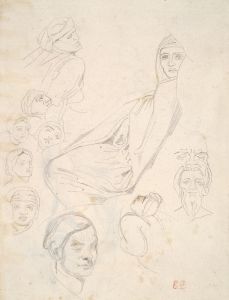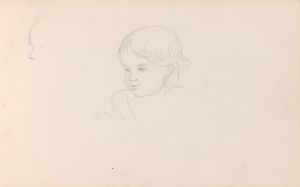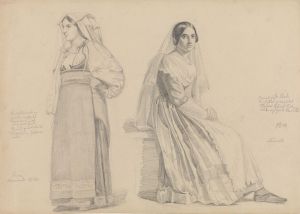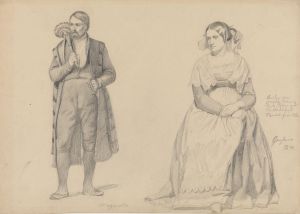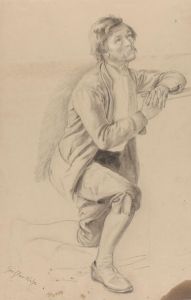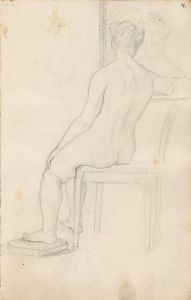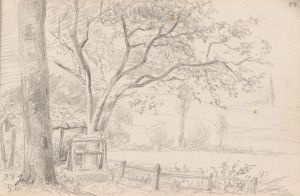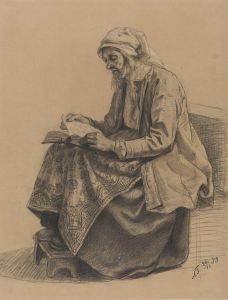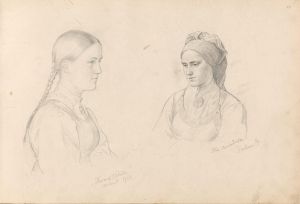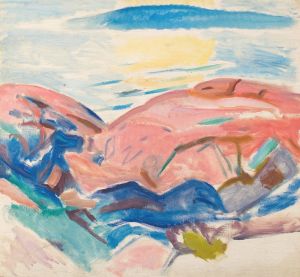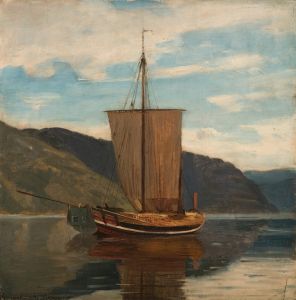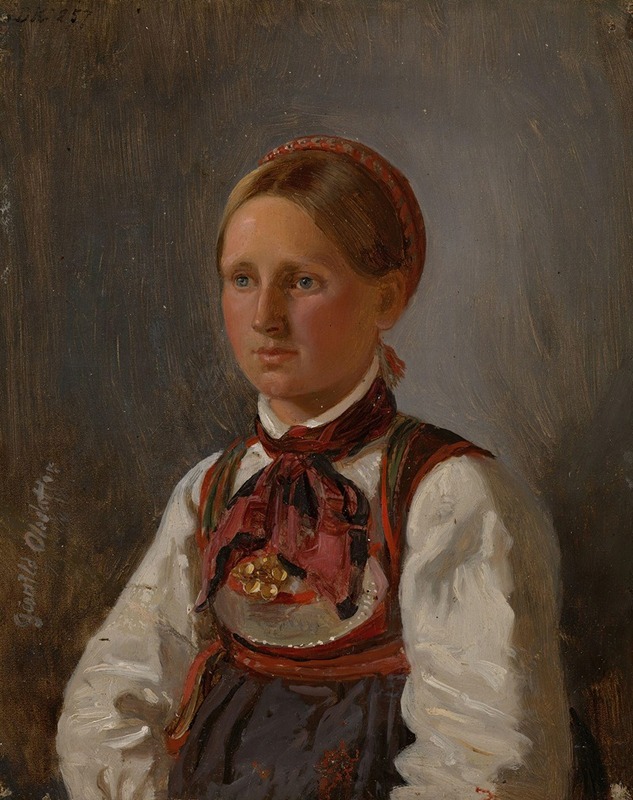
Portrait of Gunild Olsdatter from Tinn
A hand-painted replica of Adolph Tidemand’s masterpiece Portrait of Gunild Olsdatter from Tinn, meticulously crafted by professional artists to capture the true essence of the original. Each piece is created with museum-quality canvas and rare mineral pigments, carefully painted by experienced artists with delicate brushstrokes and rich, layered colors to perfectly recreate the texture of the original artwork. Unlike machine-printed reproductions, this hand-painted version brings the painting to life, infused with the artist’s emotions and skill in every stroke. Whether for personal collection or home decoration, it instantly elevates the artistic atmosphere of any space.
Adolph Tidemand's "Portrait of Gunild Olsdatter from Tinn" is a notable work by the renowned Norwegian artist, celebrated for his contributions to the Romantic Nationalism movement in 19th-century Norway. Tidemand, born in 1814 in Mandal, Norway, is best known for his detailed and evocative depictions of Norwegian folk life, customs, and traditional costumes. His works often reflect a deep appreciation for the cultural heritage of Norway, capturing the essence of rural life during a period of national awakening.
The painting "Portrait of Gunild Olsdatter from Tinn" exemplifies Tidemand's skill in portraying the character and dignity of his subjects. Gunild Olsdatter, the subject of this portrait, was a woman from Tinn, a municipality in Telemark county, Norway. Telemark is known for its rich cultural traditions and distinctive folk costumes, which Tidemand frequently incorporated into his art to emphasize the uniqueness of Norwegian identity.
In this portrait, Tidemand employs a realistic style, focusing on the intricate details of Gunild's traditional costume, which is representative of the region's folk attire. The artist's attention to detail is evident in the careful rendering of the fabric, embroidery, and accessories, which not only highlights the craftsmanship of the clothing but also serves as a visual document of Norwegian cultural heritage. The use of light and shadow in the painting adds depth and dimension, bringing a lifelike quality to the portrait.
Tidemand's choice of subject matter and his approach to portraiture were influenced by the broader Romantic movement, which sought to celebrate national identity and the beauty of the natural world. His works often convey a sense of nostalgia and reverence for the past, capturing moments of everyday life with a sense of timelessness. This particular portrait is no exception, as it reflects both the individuality of Gunild Olsdatter and the broader cultural context of 19th-century Norway.
Throughout his career, Tidemand traveled extensively throughout Norway, gathering inspiration from the country's diverse landscapes and communities. His travels allowed him to immerse himself in the local culture and traditions, which he then translated into his art. This dedication to authenticity and cultural representation is a hallmark of Tidemand's work and contributes to his lasting legacy in Norwegian art history.
"Portrait of Gunild Olsdatter from Tinn" is part of Tidemand's broader oeuvre, which includes numerous portraits, genre scenes, and historical paintings. His collaboration with fellow artist Hans Gude on works such as "Bridal Procession on the Hardangerfjord" further solidified his reputation as a leading figure in Norwegian art. Today, Tidemand's paintings are held in high regard and can be found in major art collections and museums, both in Norway and internationally.
In summary, Adolph Tidemand's "Portrait of Gunild Olsdatter from Tinn" is a significant work that captures the essence of Norwegian folk culture through the lens of Romantic Nationalism. The painting stands as a testament to Tidemand's artistic skill and his commitment to preserving and celebrating Norway's cultural heritage.





